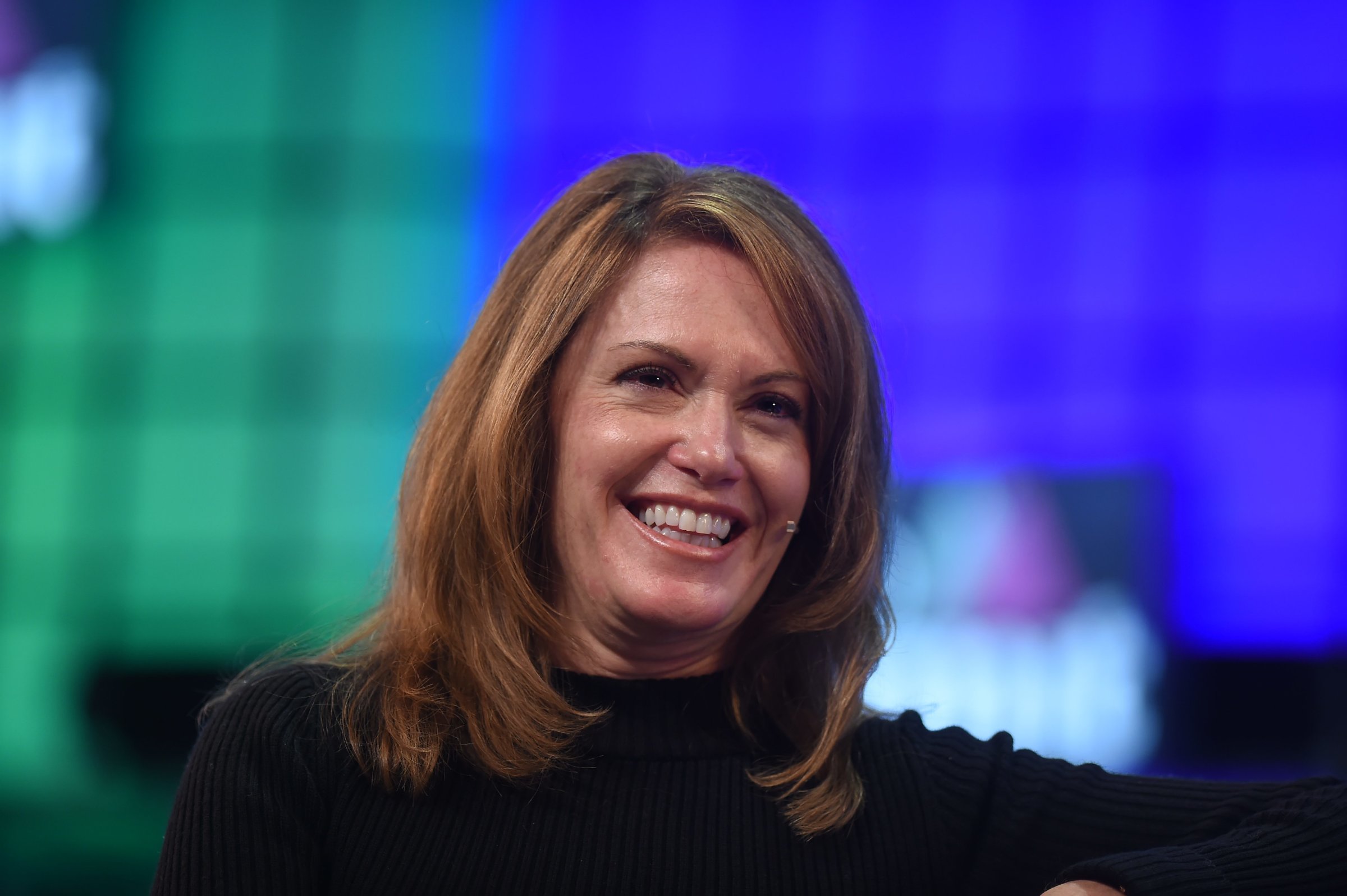
For Peggy Johnson, Microsoft’s Executive Vice President of Business Development, the transformation that has taken place at her company over the past few years has been all about a changing mindset.
Speaking at Fortune’s Brainstorm Reinvent 2018 conference in Chicago, Illinois, Johnson said that when CEO Satya Nadella was tapped to take over Microsoft in 2014, he wanted the company to implement a new way of looking at things. He had been inspired after reading Mindset, a 2006 book by Stanford University psychology professor Carol Dweck.
“Satya had this idea of changing that culture from what he called a ‘know-it-all culture’ to a ‘learn-it-all culture,’” Johnson explained. “And that started to take effect, and it started to roll through all the many layers of Microsoft. And the change became palpable.”
Back in 2014, the radical change that Nadella envisioned convinced Peggy Johnson, then an executive vice president and head of global market development at Qualcomm, to join Microsoft’s team.
According to Johnson, what caught her attention was Nadella’s willingness to break precedent. “We started to watch some of the moves he was making in the industry, [like] putting Office on iOS and Android, which was kind of stunning,” Johnson said of Nadella’s first months at Microsoft. Microsoft’s previous CEO, Steve Ballmer, was often adamantly against putting Microsoft applications on rival platforms.
Peggy says she never responded to a recruiting call in her 25 years at Qualcomm, but she did when she got a ring from Microsoft.
“It just blew me away.” Johnson said. “I met Satya for the first time and he was talking about this idea of cloud first, mobile first world … He talked about ambient intelligence and being able to tap into your data wherever you’re at throughout your day. And it made a lot of sense.”
“I thought, how can I not be part of this inflection point in Microsoft’s history?”
Johnson sees Nadella as an inspiring leader with the vision to take Microsoft into the next phase in its history.
“I think Microsoft had a very good and has a very good business model. And I think any company that has a successful business model, you can sort of fall back on and say ‘well this thing’s going to go on forever,’” she explained. “Satya knew that the industry was changing, that technology around us was changing, business models were changing, and if we didn’t change, if that company didn’t change we would be left behind.”
Upon her arrival, Johnson herself started to shake things up at Microsoft.
“I was pushing, and that’s what an ‘outside-in’ perspective does. You’re sort of allowed to be the goofball in the room and say ‘wait, why aren’t we doing that?’ and to question things and prod.”
Under Johnson’s leadership, Microsoft’s business development team made big moves, acquiring professional networking platform LinkedIn for $26.2 billion and software development platform GitHub for $7.5 billion, along with cybersecurity companies Hexadite and Secure Islands. In all, the company has announced 49 acquisitions since Johnson joined the executive team.
“We’re very disciplined in our [mergers & acquisitions] approach,” Johnson said. “We say ‘does it feed our core ambitions?’ And our core ambitions are reinventing productivity, building the intelligent cloud, and creating more personal computing, and then on the consumer side, gaming.”
LinkedIn has proved to be a solid bet for Microsoft, with June’s earnings report showing the social media platform’s revenues at $1.46 billion, the second quarter in a row of 37% annual growth. Other acquisitions, like Github, don’t generate a great deal of revenue, at least not compared to Microsoft’s core business. But Johnson says she’s more interested in how some of Microsoft’s acquisitions can help expand the company’s opportunities rather than squeezing profit out of them.
“When you look at [GitHub] in the combined set of tools and the way that we want to reach [developers], we’re going to value that acquisition on what it’s done to the broader base of Microsoft and how it’s affected growth across all those categories.”
Yet beyond the big deals that Johnson helped conceive, she believes that much of Microsoft’s recent success has had to do with the new attitude that Nadella brought with him.
“It was like a spark that started a fire,” Johnson said of the new ethos at the 131,000-employee corporation. “Everybody has bought into this change.”
More Must-Reads from TIME
- Cybersecurity Experts Are Sounding the Alarm on DOGE
- Meet the 2025 Women of the Year
- The Harsh Truth About Disability Inclusion
- Why Do More Young Adults Have Cancer?
- Colman Domingo Leads With Radical Love
- How to Get Better at Doing Things Alone
- Michelle Zauner Stares Down the Darkness
Write to Alejandro de la Garza at alejandro.delagarza@time.com